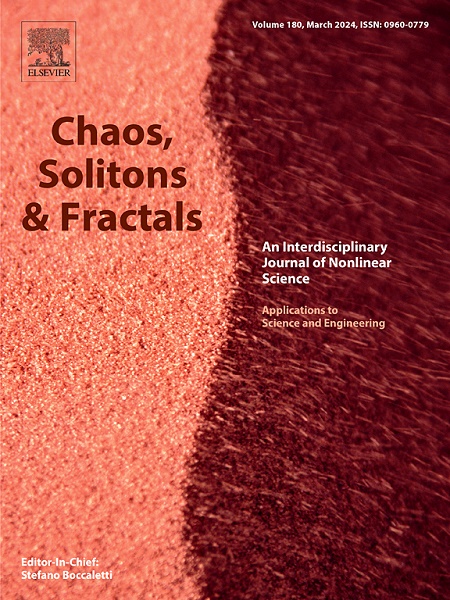超快光纤激光器用三硫铪纳米片
IF 5.3
1区 数学
Q1 MATHEMATICS, INTERDISCIPLINARY APPLICATIONS
引用次数: 0
摘要
作为过渡金属硫族化合物家族的一员,三硫化铪(HfS3)由于其独特的光学和电子特性而在光电子领域引起了相当大的兴趣。尽管有这种兴趣,但对HfS3的饱和吸收特性和超快激光应用的全面研究仍然缺乏。在这项研究中,我们采用液体剥离方法合成了HfS3纳米片,随后用于制备HfS3-超纤维饱和吸收剂(SA)。其不饱和损耗(αns)为33.13%,调制深度(αs)为10.72%。对HfS3的介电性能进行了理论研究。我们将制备的HfS3-微光纤集成到掺铒光纤(EDF)激光腔中,以阐明HfS3作为饱和吸收剂的可能用途。研究结果表明,基于hfs3的SA产生锁模激光脉冲,脉冲持续时间为492 fs,信噪比为85 dB。光纤激光器可以在39.157 kHz ~ 113.93 kHz的频率范围内工作在q开关状态。我们的工作证明了HfS3纳米片具有出色的非线性特性,在超快光子学领域发挥着极其重要的作用。本文章由计算机程序翻译,如有差异,请以英文原文为准。
Hafnium trisulfid nanosheets for ultrafast fiber laser
As a member of the transition metal chalcogenides family, hafnium trisulfid (HfS3) has gained considerable interest in the realm of optoelectronics due to the distinctive optical and electronic properties. Notwithstanding this interest, there remains a paucity of comprehensive investigations into the saturable absorption characteristics and ultrafast laser applications of HfS3. In this study, we employed a liquid exfoliation methodology to synthesize HfS3 nanosheets, which were subsequently utilized to prepare a HfS3-microfiber saturable absorber (SA). The SA exhibited a nonsaturable loss (αns) of 33.13 % and a modulation depth (αs) of 10.72 %. The dielectric properties of HfS3 were studied theoretically. We integrated the fabricated HfS3-microfiber into an Er-doped fiber (EDF) laser cavity in order to clarify the possible use of HfS3 as a saturable absorber. Our findings demonstrate that the HfS3-based SA produced mode-locked laser pulses with a narrow pulse duration of 492 fs and the signal-to-noise ratio (SNR) of 85 dB. Moreover, the fiber laser can operate in a Q-switching state with repetition frequency from 39.157 kHz to 113.93 kHz. Our work demonstrated that HfS3 nanosheets have outstanding nonlinear properties and play an extremely important role in the field of ultrafast photonics.
求助全文
通过发布文献求助,成功后即可免费获取论文全文。
去求助
来源期刊

Chaos Solitons & Fractals
物理-数学跨学科应用
CiteScore
13.20
自引率
10.30%
发文量
1087
审稿时长
9 months
期刊介绍:
Chaos, Solitons & Fractals strives to establish itself as a premier journal in the interdisciplinary realm of Nonlinear Science, Non-equilibrium, and Complex Phenomena. It welcomes submissions covering a broad spectrum of topics within this field, including dynamics, non-equilibrium processes in physics, chemistry, and geophysics, complex matter and networks, mathematical models, computational biology, applications to quantum and mesoscopic phenomena, fluctuations and random processes, self-organization, and social phenomena.
 求助内容:
求助内容: 应助结果提醒方式:
应助结果提醒方式:


